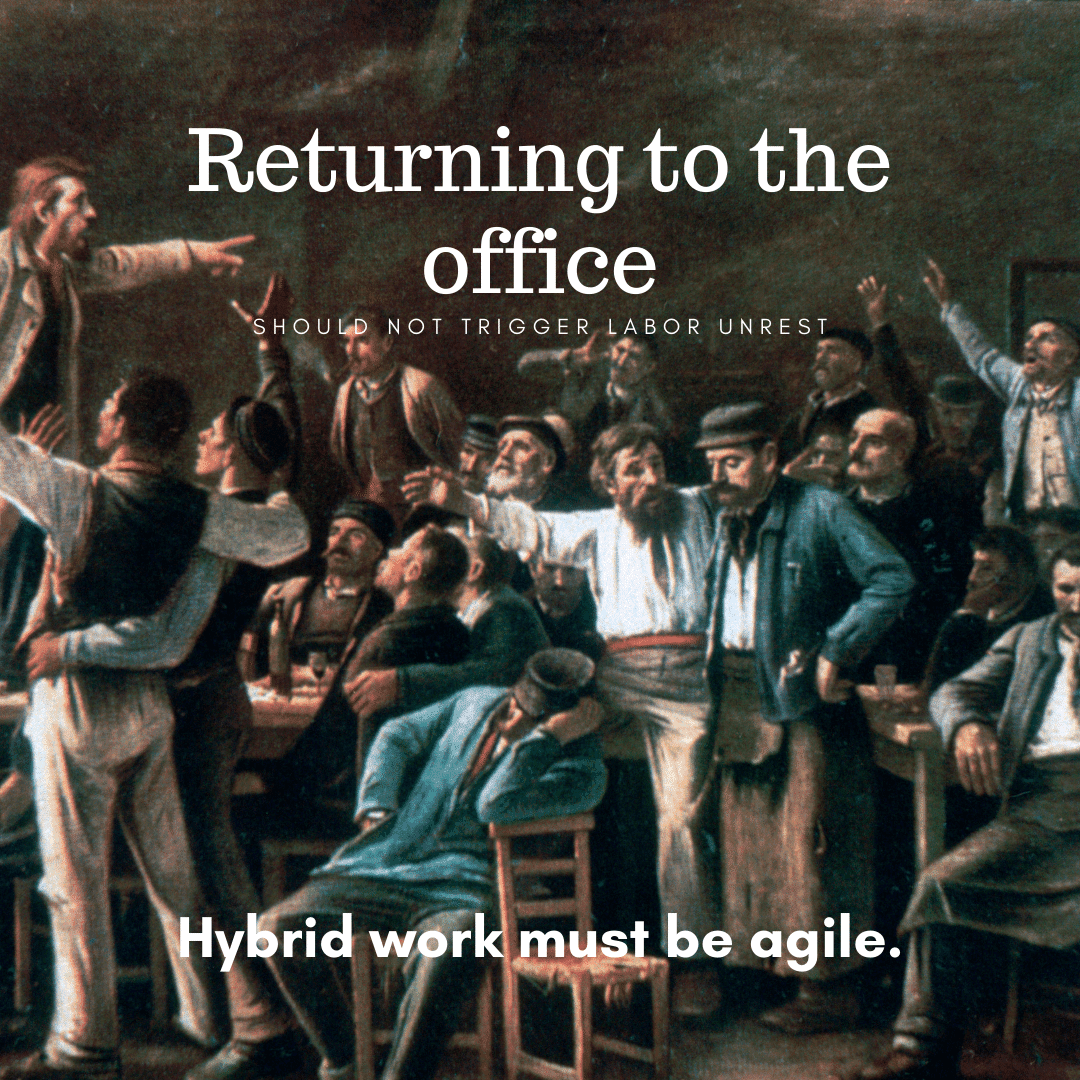Do not make hybrid work a pointless exercise.

The world turns quickly. What was the hot business trend a month ago quickly becomes obsolete. Staying ahead of this changing landscape is a fool's errand, but the business community wants to replicate anything that might give it a competitive edge. From an outsider's perspective, behavior like this looks silly, like something out of a passage of Gulliver's Travels. It is profits and promotions. This week, I noticed two articles that look like a trend but are an illustration of the values in the agile manifesto, which business leaders ignore at their peril. Embracing these agile principles could bring a new wave of productivity and harmony in the workplace.
With the threat of COVID-19 subsiding, business leaders are arguing for a return to the office. The demand that people physically be in the office has triggered a revolt among the junior bankers of Goldman Sachs. The compromise of hybrid working is also backfiring because the workers who return to the office are isolated and have video conferences with those choosing to stay home. We are looking at the worst of all worlds when getting back to work. I suspect the reason why is that business leaders are ignoring the agile value of individuals and interactions over processes and tools. It's crucial to find a balance and a compromise that works for everyone.
I can understand why business owners or executives want people back in the office. Real estate rents are expensive, so each unoccupied desk or empty conference room looks like money drifting into the wind. The other reason is that executives and entrepreneurs are builders by nature, and the office is a personal construction project. I remember the fantasy of opening my office in a loft kept me going during my failed entrepreneurial venture. I only needed to close ten clients to start paying rent. Today, I understand that I would never have that cool office of my dreams without venture capital and a better sales and marketing plan. An empty office for a business leader means that they are failing. It's important to empathize with the needs and aspirations of your team members. to
The COVID-19 pandemic made working from home a realistic alternative for many clerical workers. Video conferencing software could connect remote offices and workers. The business did not stop; instead, it shifted to coffee shops, bedrooms, and small working spaces. Accounts receivable processed invoices, human resources did what it did, and the information technology department kept it all working from the comfort of home.
Commuting time is wasted time, money, and gas. Running household errands was now impossible, and spending time with children or the family pet was out of the question. Finally, working alone in an office to attend conference calls and Zoom meetings is self-defeating. There was bound to be pushback when business leaders demanded employees return to the office. Recruiters took notice and offered to poach employees from organizations not offering alternatives to the office. It is one of the factors that keep the great resignation churning.
Please look at the agile manifesto as an owner, executive, or entrepreneur. The first part says, "Individuals and Interactions over Processes and Tools." Listen to the people who work for you to run a modern-day business. Find out what works for the team and then implement it. The solution may not be what you want, but it will be what the people who deliver value to your business need to be successful.
Many offices have standing days for in-person meetings, Wednesdays or Thursdays. If you must have everyone in the office, reach a consensus among the people you serve to have one or two days where everyone must be in the office. Great days for something like this are client demonstrations or kickoffs for large projects.
Ordering people back into the office because you are in charge does not work; it creates ill will among staff and hurts the organization. Listen to your workers and implement this. Everyone wants to get back to work, but it must work for the people delivering value; otherwise, hybrid work is pointless.
Until next time.




Comments ()